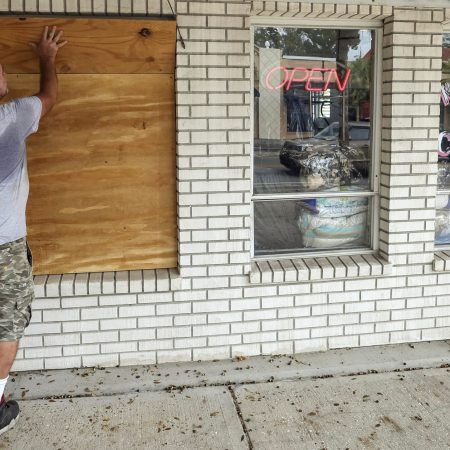What to know about Hurricane Milton as it moves toward Florida’s Gulf Coast
Not even two weeks after Hurricane Helene swamped the Florida coastline, Milton strengthened into a major hurricane that is headed toward the state.
The system is threatening the densely populated Tampa metro area — which has a population of more than 3.3 million people — and is menacing the same stretch of coastline that was battered by Helene.
Traffic was thick on Interstate 75 heading north on Tuesday as evacuees fled in advance of Milton. Crews were also hurrying to clear debris left by Helene.
When will Milton make landfall?
According to the National Hurricane Center’s Live Hurricane Tracker, Milton will make landfall on Florida’s west coast late Wednesday. It’s expected to be a Category 3 storm, which have winds of 111-129 mph (180-210 kph), when it comes ashore in the Tampa Bay region, which has not endured a head-on hit by a major hurricane in more than a century.
It could retain hurricane strength as it churns across central Florida toward the Atlantic Ocean. That path would largely spare other states that were ravaged by Helene, which killed at least 230 people as it moved from Florida to the Carolinas.
How strong will it be?
Milton intensified quickly over the eastern Gulf of Mexico. Florida Gov. Ron DeSantis told reporters Tuesday morning that “We must be prepared for a major, major impact to the west coast of Florida.”
Milton was a Category 5 hurricane with maximum sustained winds of 180 mph (285 kph) and was centered about 675 miles (1,085 kilometers) southwest of Tampa late Monday afternoon.
Those winds eased to 145 mph (233 kph) by Tuesday morning and the hurricane was downgraded to Category 4 status. It was centered about 545 miles (877 kilometers) southwest of Tampa. The hurricane center said Milton will remain “an extremely dangerous hurricane through landfall in Florida.”
How bad is damage expected to be?
Florida’s entire Gulf Coast is especially vulnerable to storm surge.
Helene came ashore about 150 miles (240 kilometers) away from Tampa in the Florida Panhandle and still managed to cause drowning deaths in the Tampa area due to surges of around 5 to 8 feet (1.5 to 2.5 meters) above normal tide levels.
Forecasters warned of a possible 10- to 15-foot (3- to 4.5-meter) storm surge in Tampa Bay. That’s the highest ever predicted for that location.
The storm could also bring widespread flooding. Five inches to a foot (13 to 30 centimeters) of rain was forecast for the Florida Peninsula, with as much as 18 inches (45 centimeters) expected in some places.
What if I have travel plans to that part of Florida?
Tampa International Airport said it halted flights at 9 a.m. Tuesday. The airport posted on X that it is not a shelter for people or their cars.
St. Pete-Clearwater International Airport said it is in a mandatory evacuation zone and will close after the last flight leaves Tuesday.
How is Mexico preparing?
Mexican officials were organizing buses to evacuate people from the low-lying coastal city of Progreso on the Yucatan Peninsula after Mexico’s National Meteorological Service said Hurricane Milton “may hit between Celestun and Progreso.”
Celestun, on the western corner of the peninsula, is a low-lying nature reserve home to tens of thousands of flamingos. Progreso, to the east, is a shipping and cruise ship port with a population of about 40,000.
The post What to know about Hurricane Milton as it moves toward Florida’s Gulf Coast appeared first on WDET 101.9 FM.

